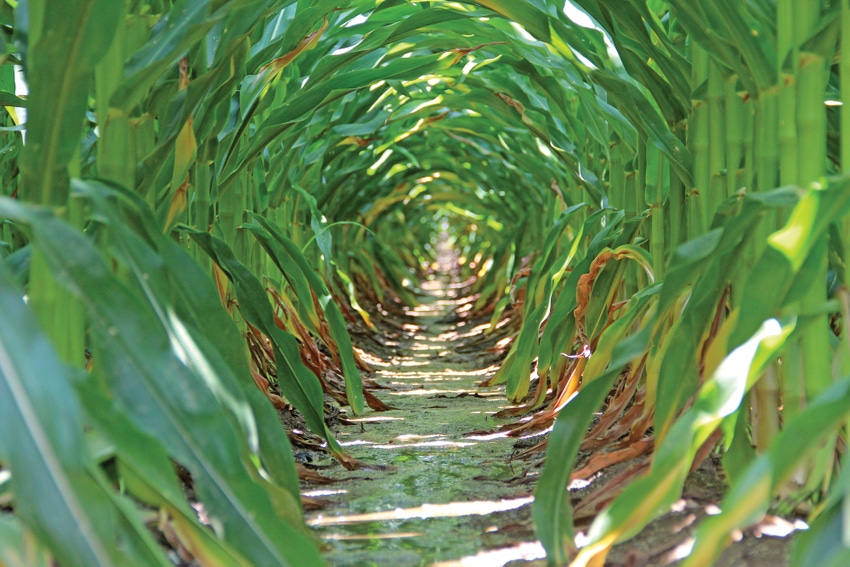June 24, 2013

Louisiana corn growers are waiting for confirmation that Goss’s wilt disease has been found in some corn fields in Madison Parish.
“Unless I have skipped something in the literature, this is the first report of Goss’s wilt in Louisiana,” said LSU AgCenter plant pathologist Clayton Hollier.
On June 18, samples were taken from corn fields in Madison Parish that had both classic leaf symptoms and disease spread pattern of Goss’s wilt in the corn hybrid DK 6694, he said.
“During the 2011 corn growing season, there were reports of Goss’s wilt in northeast Louisiana, but further investigation found that these were fertilizer burn, herbicide burn and drought symptoms that were widespread that year,” Hollier said.
In Madison Parish, a local aerial applicator, who flew over the field first noticed a 50 foot circle of affected plants.
The grower called in several people from industry and the LSU AgCenter to investigate, he said.
They found several circles of damaged plants radiating out from a central source that suggested seed transmission, he said.
“Leaf blighting symptoms were elongated with water-soaked lesions with ‘freckles,’ a characteristic of the disease,” Hollier said. “Upon microscopic investigation, bacterial streaming was evident.”
Since those observations the field has been isolated and Hollier and his team are awaiting positive identification of the bacterium.
Additional symptoms have been found in the corn hybrids DK 6469 and in DK6696 in the same region of the state, Hollier said.
There are several implications for Louisiana growers:
– The disease does not seem to be widespread at this point. Scouting is continuing.
– The disease pattern in the field indicates seed transmission.
– The plants affected in the “circular” pattern will be the most damaged, with losses ranging from 100 percent in the “epicenter” to minor, if any, losses at the edge of the circle.
– Since the bacterium survives in infested residue, any type of tillage operation that buries residue to encourage decomposition may be effective in reducing the rate of new infections.
– Rotating out of corn into other crops such as soybeans or small grains will help reduce primary inoculum sources in corn residue.
– Additional hosts for the pathogen include green foxtail, shatter cane and barnyard grass; therefore, weed control may also be important for disease control.
Ag news delivered daily to your inbox: Subscribe to Delta Farm Press Daily.
– The environmental conditions in Louisiana are expected to be harsh on the bacterium because it is not native. Overwintering survival is not expected with tillage and decomposition of residue. “But we are dealing with nature, so there are no guarantees, Hollier said.
Hollier said more updates will be provided as the information becomes available. Additional information on the disease is available from LSU AgCenter parish offices.
You might also read:
Organization and technology crucial to manage 8500 acres
You May Also Like




